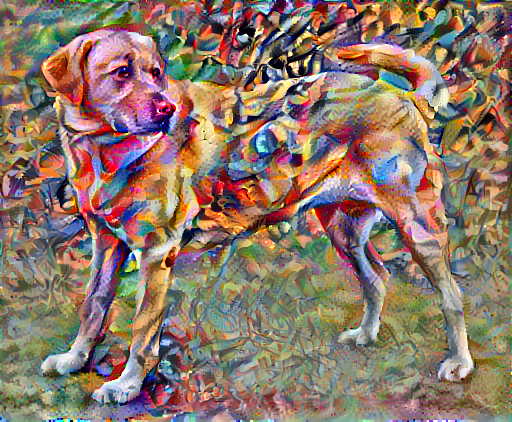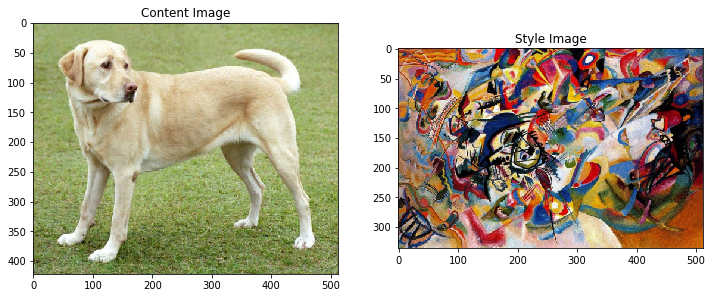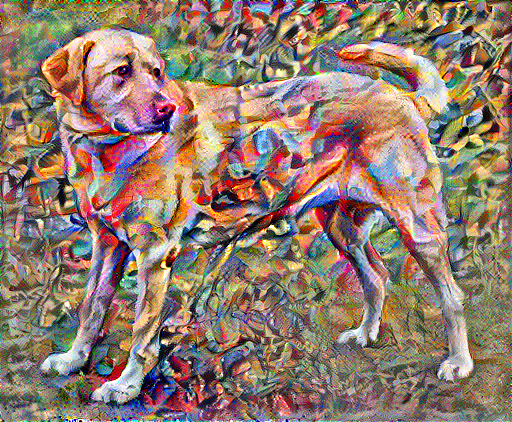# 使用tf.keras.applications中的网络可以让我们非常方便的利用Keras的功能接口提取中间层的值。
# 在使用功能接口定义模型时,我们需要指定输入和输出:
# model = Model(inputs, outputs)
# 以下函数构建了一个 VGG19 模型,该模型返回一个中间层输出的列表:def vgg_layers(layer_names): # 加载我们的模型。 加载已经在 imagenet 数据上预训练的 VGG vgg = tf.keras.applications.VGG19(include_top=False, weights='imagenet') vgg.trainable = False
outputs = [vgg.get_layer(name).output for name in layer_names]
model = tf.keras.Model([vgg.input], outputs) return model
# 然后建立模型style_extractor = vgg_layers(style_layers)style_outputs = style_extractor(style_image*255)
#查看每层输出的统计信息for name, output in zip(style_layers, style_outputs): print(name) print(" shape: ", output.numpy().shape) print(" min: ", output.numpy().min()) print(" max: ", output.numpy().max()) print(" mean: ", output.numpy().mean()) print()# 图像的内容由中间 feature maps (特征图)的值表示。# 事实证明,图像的风格可以通过不同 feature maps (特征图)上的平均值和相关性来描述。# 通过在每个位置计算 feature (特征)向量的外积,并在所有位置对该外积进行平均,可以计算出包含此信息的 Gram 矩阵。# 这可以使用tf.linalg.einsum函数来实现:def gram_matrix(input_tensor): result = tf.linalg.einsum('bijc,bijd->bcd', input_tensor, input_tensor) input_shape = tf.shape(input_tensor) num_locations = tf.cast(input_shape[1]*input_shape[2], tf.float32) return result/(num_locations)
# 构建一个返回风格和内容张量的模型。class StyleContentModel(tf.keras.models.Model): def __init__(self, style_layers, content_layers): super(StyleContentModel, self).__init__() self.vgg = vgg_layers(style_layers + content_layers) self.style_layers = style_layers self.content_layers = content_layers self.num_style_layers = len(style_layers) self.vgg.trainable = False
def call(self, inputs): "Expects float input in [0,1]" inputs = inputs*255.0 preprocessed_input = tf.keras.applications.vgg19.preprocess_input(inputs) outputs = self.vgg(preprocessed_input) style_outputs, content_outputs = (outputs[:self.num_style_layers], outputs[self.num_style_layers:])
style_outputs = [gram_matrix(style_output) for style_output in style_outputs]
content_dict = {content_name:value for content_name, value in zip(self.content_layers, content_outputs)}
style_dict = {style_name:value for style_name, value in zip(self.style_layers, style_outputs)}
return {'content':content_dict, 'style':style_dict} # 在图像上调用此模型,可以返回 style_layers 的 gram 矩阵(风格)和 content_layers 的内容:extractor = StyleContentModel(style_layers, content_layers)
results = extractor(tf.constant(content_image))
style_results = results['style']
print('Styles:')for name, output in sorted(results['style'].items()): print(" ", name) print(" shape: ", output.numpy().shape) print(" min: ", output.numpy().min()) print(" max: ", output.numpy().max()) print(" mean: ", output.numpy().mean()) print()
print("Contents:")for name, output in sorted(results['content'].items()): print(" ", name) print(" shape: ", output.numpy().shape) print(" min: ", output.numpy().min()) print(" max: ", output.numpy().max()) print(" mean: ", output.numpy().mean())
# 梯度下降# 使用此风格和内容提取器,我们现在可以实现风格传输算法。我们通过计算每个图像的输出和目标的均方误差来做到这一点,然后取这些损失值的加权和。
# 设置风格和内容的目标值:
style_targets = extractor(style_image)['style']content_targets = extractor(content_image)['content']# 定义一个 tf.Variable 来表示要优化的图像。 # 为了快速实现这一点,使用内容图像对其进行初始化( tf.Variable 必须与内容图像的形状相同)
image = tf.Variable(content_image)# 由于这是一个浮点图像,因此我们定义一个函数来保持像素值在 0 和 1 之间:
def clip_0_1(image): return tf.clip_by_value(image, clip_value_min=0.0, clip_value_max=1.0)# 创建一个 optimizer 。 本教程推荐 LBFGS,但 Adam 也可以正常工作:
opt = tf.optimizers.Adam(learning_rate=0.02, beta_1=0.99, epsilon=1e-1)# 为了优化它,我们使用两个损失的加权组合来获得总损失:
style_weight=1e-2content_weight=1e4
def style_content_loss(outputs): style_outputs = outputs['style'] content_outputs = outputs['content'] style_loss = tf.add_n([tf.reduce_mean((style_outputs[name]-style_targets[name])**2) for name in style_outputs.keys()]) style_loss *= style_weight / num_style_layers
content_loss = tf.add_n([tf.reduce_mean((content_outputs[name]-content_targets[name])**2) for name in content_outputs.keys()]) content_loss *= content_weight / num_content_layers loss = style_loss + content_loss return loss# 使用 tf.GradientTape 来更新图像。
@tf.function()def train_step(image): with tf.GradientTape() as tape: outputs = extractor(image) loss = style_content_loss(outputs)
grad = tape.gradient(loss, image) opt.apply_gradients([(grad, image)]) image.assign(clip_0_1(image))# 现在,我们运行几个步来测试一下:
train_step(image)train_step(image)train_step(image)tensor_to_image(image)
# 运行正常,我们来执行一个更长的优化:
import timestart = time.time()
epochs = 10steps_per_epoch = 100
step = 0for n in range(epochs): for m in range(steps_per_epoch): step += 1 train_step(image) print(".", end='') display.clear_output(wait=True) display.display(tensor_to_image(image)) print("Train step: {}".format(step))
end = time.time()print("Total time: {:.1f}".format(end-start))


















评论